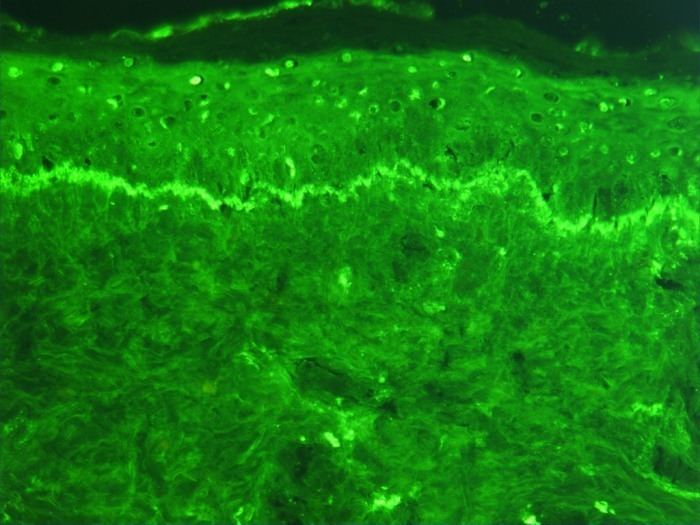 | ||
Lupus band test is done upon skin biopsy, with direct immunofluorescence staining, in which, if positive, IgG and complement depositions are found at the dermoepidermal junction. This test can be helpful in distinguishing systemic lupus erythematosus (SLE) from cutaneous lupus, because in SLE the lupus band test will be positive in both involved and uninvolved skin, whereas with cutaneous lupus only the involved skin will be positive.
The minimum criteria for positivity are:
The presence of other immunoglobulins (especially IgA) and/or complement proteins (especially C4) increases the specificity of a positive test.
References
Lupus band test Wikipedia(Text) CC BY-SA
